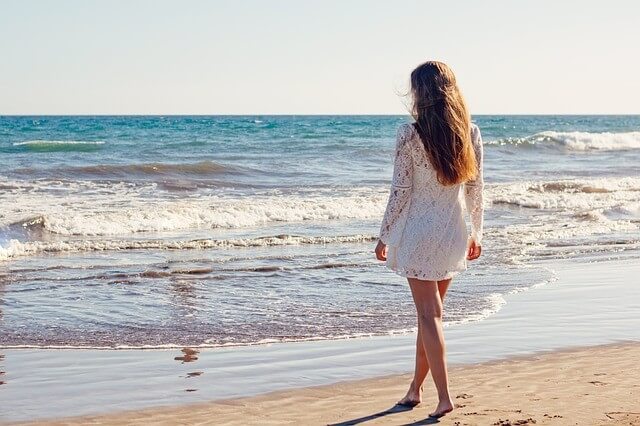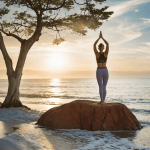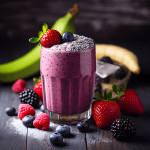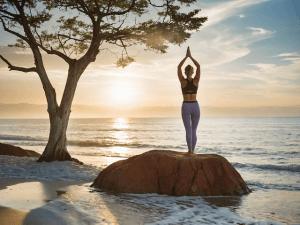
Holly Barrington was on a holiday when she was diagnosed with a severe case of sun poisoning. This young girl had fully protected herself against the UV rays, she had applied sunblock, and had protected her head with a hat and her eyes with sunglasses.
But she says her sunglasses let her down. When she went back to her room, she felt her face was swollen and feeling hot. The next morning she saw in the bathroom mirror that her eyes were swollen big so much so that she looked like a chipmunk. Her greatest fear was that she might go blind.
What is Sun Poisoning and How Does it Look Like?
Sun poisoning is a lay term for terrible sunburn. It’s not a medical diagnosis but inflammation of your skin caused by ultraviolet radiation. Your skin will turn into a shade of lobster red; besides, you might develop a rash or blisters.
You may feel pain in the affected area. Moreover, if you have a weak immune system, you might also experience photodermatoses: these are skin eruptions that occur due to sun exposure.
You’ll be at an increased risk of sun poisoning if you have a light complexion, are on antibiotics or have a family history of skin cancer. Also, other factors include your living conditions whether you live in extremely hot regions or high altitudes, whether you frequently go to the beach, or are using chemical peels or antibiotics. Applying citrus oil before going out can also increase sunburn.
What are the Symptoms?
Sun poisoning shares a few symptoms, with regular sunburn such as pain, blistering, and redness. Also, severe sunburn can lead to headache, fever, and chills, nausea, dehydration, and dizziness. Generally, the symptoms appear after a few hours of being out in the sun. Or the symptoms can take up a day or even longer to manifest.
Types of Sun Poisoning
Sun poisoning is basically of two types polymorphous light eruption and solar urticaria. PMLE occurs in people who are at risk as well as to those who are not exposed to intense heat. The symptoms may include severe skin rashes such as small bumps over the exposed parts of the body, hives and dense clumps of bumps.
Solar urticaria produces symptoms within a few minutes after exposure to the sun. The symptoms include itchiness, redness, dizziness, wheezing, hives, and loss of consciousness.
Treatment

When you’re sun poisoned and suffer from extreme blistering and dehydration then pay a visit to your doctor. If blisters are covering a large area of your body, then visit your doctor right away.
If you’re suffering from a mild form of sunburn, take cool showers, to soothe the pain as well as to bring down your body temperature. Aloe vera gel and cold milk compress can work wonders for your sunburnt skin. The lipids in the milk can soothe your burnt skin.
Keep yourself well hydrated by drinking extra fluids. Over the counter pain relievers such as ibuprofen or acetaminophen helps to relieve pain. Completely cover the sunburnt areas while venturing out in the sun.
How to Treat Sun Poisoning Naturally
Home treatments help you to relax as well as soothe the inflamed skin. Here are some home remedies that you can try.
Aloe vera
Scrape some aloe gel from the aloe leaf. Apply evenly on the affected area and leave it for 30 minutes. Then wash in cold water. Repeat this process 3 to 4 times daily.
Aloe contains potent anti-inflammatory properties that will soothe your skin. Its wound healing properties help to heal the blisters and burns that are caused due to sun poisoning.
Green tea bags
Chill used green tea bags in a refrigerator, and gently place the tea bag on the sunburnt area. Leave it for 30 minutes. Do it many times a day to obtain maximum benefits.
Green tea is rich in antioxidants. The anti-inflammatory properties of these antioxidants soothe the inflamed skin and reduce the severity of blisters and peeling skin.
Honey
Take pure organic honey and slowly apply it on your affected areas. Let it remain for 30 minutes and then wash it off with cold water. Honey has anti-inflammatory and analgesic properties that can calm down irritated skin. Its wound healing properties heal the blisters on your sun poisoned skin.
Cold milk
Apply a cold compress with cold milk diluted with water. The cold milk soothes the heat of the skin. The antioxidants vitamins A and D help assist in healing the skin. The lactic acid removes the dead cells out of your skin.
How to Prevent Sun poisoning
Apply a broad-spectrum sunscreen with an SPF of 30 or above to your exposed parts. Put it on 15-30 minutes before you go out in the sun. Reapply after a gap of two hours. Avoid sun exposure between 10 a.m in the morning and 2 p.m. in the afternoon. Wear sunglasses, a hat, and protective clothing.
Wear sun protective clothing with built-in UPF (similar to SPF for fabric). Always remember that snow, water, and sand can increase the impact of the UV rays. While choosing sunglasses, make sure that they have 100 percent UV protection, also known as UV400. Coco Leni, and Warby Parker are some of the trusted names to choose your aviators.
Enjoy Your Summer
Summer is a beautiful time to relax with your near and dear ones. Protect your self from the damaging rays of the sun by layering up sunscreen. Cover your head with a hat, wear 100% UV protected sunglasses and keep yourself well hydrated.













